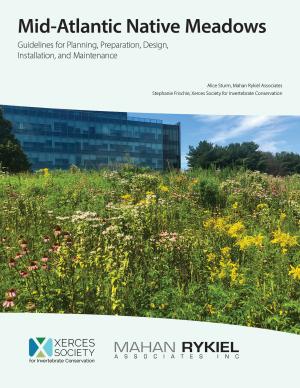
Native meadows, filled with perennial wildflower mosaics and waving grasses, are growing in popularity with property owners and designers because they provide benefits to people, pollinators, and wildlife while demonstrating sustainability values. These meadowscapes offer economic and ecological advantages over intensively managed horticultural landscapes. Seeded meadows are low-input alternatives to containerized plantings or certain turf spaces, and so they have a role to play in institutional, commercial, and multifamily residential projects. The successful use of meadows depends on a thoughtful plan that includes proper design, installation, management, and project (or client) expectations. With this guide, we highlight the advantages of meadows and provide a framework for successfully implementing meadow projects.
Seeded meadows are often used in the ecological restoration of natural and seminatural landscapes. However, the scheduling and aesthetic requirements of institutional or commercial meadow projects differ from those of ecological restoration projects—ecological restoration places a priority on timing activities within optimum seasons, uses a reference community, and emphasizes ecological goals over aesthetics or human uses. Meadows have been used in the residential market for some time, though few designers or contractors have the comfort and experience to specify, install, and maintain this type of landscape. Meadows offer landscape architects and designers an opportunity to expand their creative and technical toolbox, and a fundamental understanding of meadows is key to using them successfully.
This guide outlines the unique considerations for native meadows in landscape architecture, with the goal of helping green industry professionals in the mid-Atlantic create successful meadow projects. We provide an overview of the benefits of native meadows and how to establish them from seed. (For the purposes of this guide, a meadow refers to a plant community made up of native grasses, sedges, and forbs, grown from seed.) This is not a complete manual, but rather a foundation to inspire more consideration and use of meadows, while also setting expectations and planning requirements for site preparation, installation, maintenance, and adaptive management. We highlight the advantages of successful meadow projects and provide a framework for addressing their challenges.
Additionally, this guide is designed with property owners and managers in mind, addressing a variety of factors—ranging from soil conditions and proposed site uses to desired aesthetics. Lastly, we provide tools to help people decide if a meadow is the right choice for their site.
